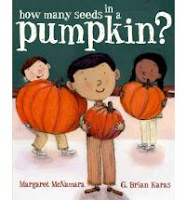* Happy by Mies Van Hout
The French teacher at school bought the French version of this book while on holiday in France and we pored over it marvelling that a fish could have so much expression. Each page has a fish expressing a particular feeling and the adjective in an artistic font that also expresses the feeling. So this year I bought the English version and while it is a translation and still beautiful we all agree it lost something in the translation. Who cares most of us will only read the English version.
* Hello! Hello! by Matthew Cordell
We all sat round in the library and had a good giggle at this. Lydia's family is too busy with their electrical gadgets to do things with her so she goes off to rediscover the natural world by herself and revels in it. This story is a good follow up to Lane Smith's It's a Book because it reminds us that nothing should take the place of what we already have that is good and worth keeping.

* The Beetle Book by Steve Jenkins
 I chose this because I am always in awe of how interesting and beautiful Steve Jenkins can make non-fiction picture books. Did you know that one out of every four living things on earth is a beetle?
I chose this because I am always in awe of how interesting and beautiful Steve Jenkins can make non-fiction picture books. Did you know that one out of every four living things on earth is a beetle?* Nighttime Ninja by Barbara DaCosta and Ed Young
Ninjas are a very popular subject for books in my library! The two about Wink by J.C Phillips are never in and always reserved. So when I read about Nighttime Ninja and knew a parent was off to the States on holiday I got her to get it. Of course with illustrations by Ed Young it couldn't disappoint me, but it has been popular with the boys too.
* The Jelly That Wouldn't Wobble by Angela Mitchell and Sarah Horne
This book just made us all laugh! It is such a good read-aloud. The princess is old and wants her jelly to wobble!
* The Worst Princess by Anna Kemp and Sarah Ogilvie
 This too has a royal theme, an unexpected heroine and makes you laugh!
This too has a royal theme, an unexpected heroine and makes you laugh!* I Love Lemonade by Mark Sommerset
 Last year the preschool classes and I had so much fun with Baa Baa Smart Sheep. They love the joke that the sheep plays on the turkey. This new book is the sequel and Turkey wants to get even! I can't wait to try it out on classes.
Last year the preschool classes and I had so much fun with Baa Baa Smart Sheep. They love the joke that the sheep plays on the turkey. This new book is the sequel and Turkey wants to get even! I can't wait to try it out on classes.* This is Not My Hat by Jon Klassen
This book is perfect! Great for visual literacy because so much of the story is in the pictures and therefore the readers giggle at what happens to the fish when his hat goes. It also has so much to talk about.


* Oh No, George! by Chris Haughton
The title and the illustration of the dog on the cover says it all really. There have been some good 'dog' books this year, but this is one of the best.
* Same, But Little Bit Diff'rent by Kylie Dunstan
I know there should be more Australian titles, but other than this one none sprang immediately to mind and I will need to look at them closely soon to do my Clayton's shortlist for Early Childhood so they can wait. I like this book because the concept is simple, pertinent and unfortunately still necessary with children such as those at my school. Let's celebrate difference!












































